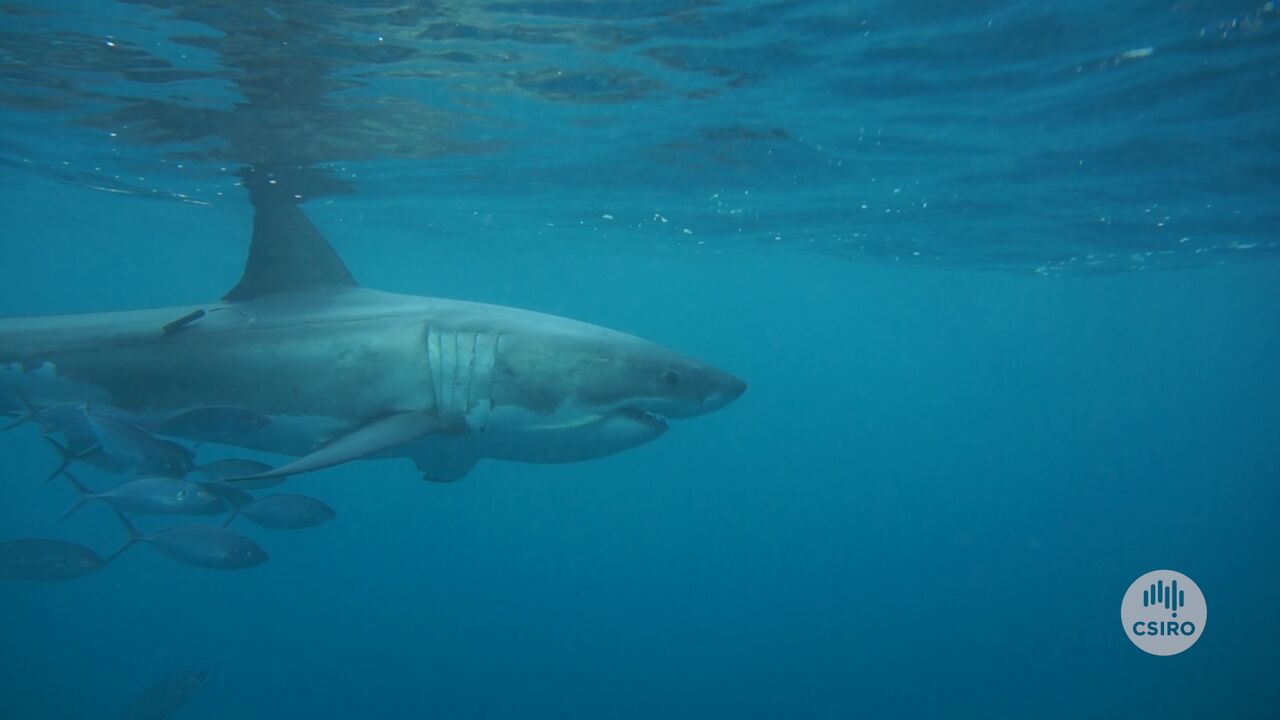Life history of white sharks
 The life history characteristics of white sharks mean their populations are vulnerable to low levels of exploitation such as fishing (including incidental bycatch) and slow to recover once populations are depleted.
The life history characteristics of white sharks mean their populations are vulnerable to low levels of exploitation such as fishing (including incidental bycatch) and slow to recover once populations are depleted.
Female white sharks are long-lived, slow growing species that do not reproduce in Australian waters until approximately five metres in length and 16 years of age.
Adult females produce few young called ‘pups’ (up to 10 per reproductive event) and they do not reproduce each year.
White shark conservation status
White sharks are internationally protected by several nations and listed under the Convention on International Trade in Endangered Species (Appendix II) and the Convention on Migratory Species (Appendix II), to which Australia is a signatory.
An Australian White Shark (Carcharodon carcharias) Recovery Plan was originally ratified in 2002 and a revised plan was published in 2013.
The review of the 2002 recovery plan included a contemporary issues paper from the Department of the Environment, Water, Heritage and the Arts (DEWHA) titled White Shark Issues Paper detailing the then state of knowledge of white sharks in Australian waters prepared by CSIRO under contract to the Department of Sustainability, Environment, Water, Population and Communities (SEWPaC).
The implementation of recovery strategies and the monitoring of these strategies is highlighted in the Department Agriculture, Fisheries and Forestry's (DAFF) Australia’s National Plan of Action for the Conservation and Management of Sharks (Shark Plan 2). CSIRO plays a key role by working with national and international partners to deliver aspects of the recovery plan’s objectives.
Life history of white sharks
The life history characteristics of white sharks mean their populations are vulnerable to low levels of exploitation such as fishing (including incidental bycatch) and slow to recover once populations are depleted.
Female white sharks are long-lived, slow growing species that do not reproduce in Australian waters until approximately five metres in length and 16 years of age.
Adult females produce few young called ‘pups’ (up to 10 per reproductive event) and they do not reproduce each year.
White shark conservation status
White sharks are internationally protected by several nations and listed under the Convention on International Trade in Endangered Species (Appendix II) and the Convention on Migratory Species (Appendix II), to which Australia is a signatory.
An Australian White Shark (Carcharodon carcharias) Recovery Plan was originally ratified in 2002 and a revised plan was published in 2013.
The review of the 2002 recovery plan included a contemporary issues paper from the Department of the Environment, Water, Heritage and the Arts (DEWHA) titled White Shark Issues Paper detailing the then state of knowledge of white sharks in Australian waters prepared by CSIRO under contract to the Department of Sustainability, Environment, Water, Population and Communities (SEWPaC).
The implementation of recovery strategies and the monitoring of these strategies is highlighted in the Department Agriculture, Fisheries and Forestry's (DAFF) Australia’s National Plan of Action for the Conservation and Management of Sharks (Shark Plan 2). CSIRO plays a key role by working with national and international partners to deliver aspects of the recovery plan’s objectives.
